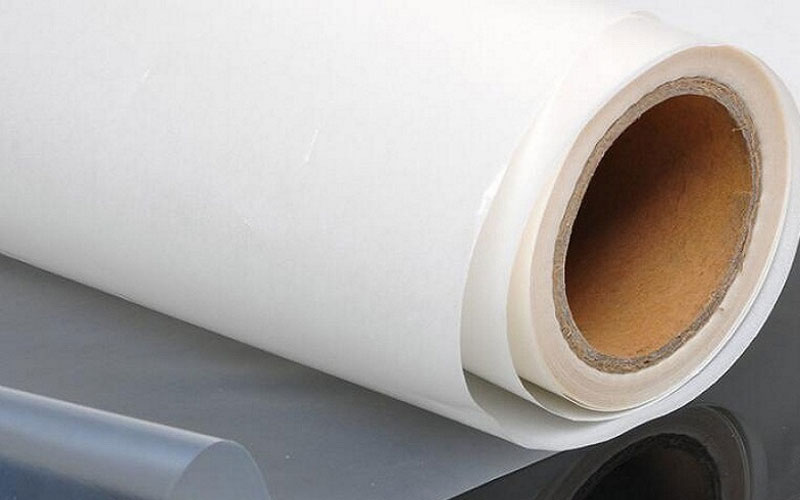In the modern world of manufacturing, product assembly, and industrial bonding, heat activated adhesive film has become a go-to solution for many industries. Its versatility, strength, and precision bonding capabilities make it an excellent choice for a wide variety of applications ranging from electronics to automotive and textiles.
In this article, we will explore what heat activated adhesive film is, how it works, the industries that rely on it, its key advantages, and why it continues to grow in popularity over traditional bonding methods.

1. What Is Heat Activated Adhesive Film?
Heat activated adhesive film is a solid, dry adhesive material that requires heat to activate its bonding properties. Unlike pressure-sensitive adhesives (PSAs), which adhere immediately upon contact, heat activated films remain non-tacky at room temperature. They only become adhesive when exposed to a specific temperature threshold, which melts or softens the resin, allowing it to bond to the substrate.
This type of adhesive is typically supplied in rolls, sheets, or pre-cut forms and is known for its clean application, no-mess processing, and precision alignment.
Characteristics of Heat Activated Adhesive Films:
Solid at room temperature
Requires heat (usually 80–160°C depending on formulation)
Often thermoplastic or thermosetting
Excellent for permanent bonding
Uniform thickness ensures consistent performance
2. How Does Heat Activated Adhesive Film Work?
The bonding process of heat activated adhesive film involves several simple steps:
Positioning – The film is placed between the surfaces that need to be bonded.
Heat Application – A heat press or thermal bonding machine applies heat (and sometimes pressure), softening or melting the adhesive.
Flow and Wetting – As the adhesive softens, it flows slightly and wets the surfaces.
Cooling and Curing – Once cooled, the adhesive solidifies to form a strong and durable bond.
The result is a clean, gap-free, and strong bond that is resistant to environmental stresses, making it suitable for demanding industrial applications.
3. Key Advantages of Heat Activated Adhesive Film
There are many reasons why manufacturers and designers prefer heat activated adhesive film over liquid adhesives or mechanical fasteners:
3.1 Clean and Precise Bonding
Because the adhesive is solid before activation, it allows for precise placement and alignment, reducing the risk of misalignment or mess during assembly. There is no dripping, oozing, or overflow, which is common in liquid adhesives.
3.2 Consistent Bond Line Thickness
One of the major challenges in adhesive bonding is maintaining consistent thickness. Heat activated films offer uniform thickness, which is critical in electronic applications, optical devices, and layered laminates.
3.3 Superior Bond Strength
When properly applied, heat activated film adhesive creates exceptionally strong bonds that can withstand thermal cycling, vibration, and chemical exposure. This makes it ideal for automotive interiors, aerospace components, and high-end consumer electronics.
3.4 No Need for Drying or Curing Time
Unlike solvent-based adhesives, heat activated adhesives bond immediately upon cooling. This reduces the waiting time and speeds up production processes.
3.5 Eco-Friendly and Safe
These films are often solvent-free, reducing the emission of volatile organic compounds (VOCs). This makes them environmentally friendly and safer for operators.
4. Common Applications of Heat Activated Adhesive Film
Heat activated adhesive films are used in a wide array of industries. Below are some of the most common applications:
4.1 Automotive Industry
Interior Trim Bonding – Door panels, headliners, and carpet layers are often assembled using heat activated films.
Laminating Decorative Surfaces – To bond decorative veneers to dashboards and panels.
4.2 Electronics
Flexible Printed Circuits (FPCs) – Used in the assembly of multilayer flexible circuits.
Display Modules – Bonding optical layers, touch sensors, and cover lenses in LCDs and OLEDs.
4.3 Textile and Apparel
Heat Transfers – Applying logos, labels, and embellishments.
Seam Sealing – Waterproof and breathable garments use heat activated adhesives for seam sealing.
4.4 Aerospace and Defense
Panel Laminates – Used in bonding honeycomb structures to skins or stiffeners.
Composite Materials – Bonding carbon or fiberglass reinforcements.
4.5 Medical Devices
Wearable Sensors – Attachment of electronic sensors to flexible substrates.
Medical Films – Used in diagnostic patches and layered skin-contacting devices.

5. Choosing the Right Heat Activated Adhesive Film
Selecting the appropriate heat activated adhesive film for your application depends on several factors:
5.1 Substrate Compatibility
The adhesive must be compatible with the materials it will bond to—plastic, metal, textiles, wood, or glass. Some formulations are optimized for low surface energy plastics like polyethylene or polypropylene.
5.2 Temperature Requirements
Different films activate at different temperatures. Choose a film with an activation range that matches your equipment and won’t damage the substrates.
5.3 Bond Strength and Durability
Consider the mechanical stress, environmental exposure, and life expectancy of the product. For high-strength requirements, thermosetting adhesive films may be better than thermoplastic ones.
5.4 Film Thickness
Thicker films can fill gaps and provide cushioning, while thinner films are ideal for applications requiring precision and minimal bulk.
6. Types of Heat Activated Adhesive Films
There are two main categories:
6.1 Thermoplastic Films
These adhesives melt upon heating and re-solidify upon cooling. They are reworkable and suitable for applications where repositioning might be necessary. They offer moderate strength and flexibility.
6.2 Thermosetting Films
These undergo a chemical crosslinking reaction upon heating. Once cured, they form a permanent, heat-resistant bond that cannot be melted again. These are ideal for high-temperature or structural bonding.
7. Comparison: Heat Activated Adhesive Film vs Other Adhesive Technologies
| Feature | Heat Activated Adhesive Film | Liquid Adhesives | Pressure-Sensitive Adhesives |
|---|---|---|---|
| Clean Application | ✅ Yes | ❌ Messy | ✅ Yes |
| Precision | ✅ High | ❌ Variable | ✅ Moderate |
| Activation | Heat Required | Solvent Cure / UV / Heat | Immediate |
| Strength | ✅ High | ✅ Varies | ❌ Lower |
| Reworkable | ✅ (Thermoplastic) | ❌ No | ✅ Yes |
| Drying Time | ✅ None | ❌ Required | ✅ None |
| VOCs | ✅ Low/None | ❌ High | ✅ Low |

8. Tips for Using Heat Activated Adhesive Film
To get the best results when working with heat activated adhesive film, follow these best practices:
Clean Substrates – Always clean surfaces thoroughly to remove oils, dust, and contaminants.
Use the Right Equipment – A heat press or bonding laminator with accurate temperature control is crucial.
Monitor Heat and Time – Excessive heat can damage substrates, while insufficient heat may cause poor adhesion.
Apply Even Pressure – Ensure even and sufficient pressure during bonding to eliminate air gaps.
9. Emerging Trends in Heat Activated Film Adhesive Technology
As industries continue to demand better performance and environmental responsibility, the field of heat activated film adhesive is evolving. Some current trends include:
Bio-based Adhesive Films – Made from renewable resources for eco-conscious applications.
Conductive Adhesive Films – Allow electrical connectivity in addition to bonding.
Low-Temperature Activation Films – For sensitive electronics and thin substrates.
Custom-Patterned Films – Precision-cut adhesives for complex designs using laser or die-cutting.
10. Conclusion
Heat activated adhesive film has proven itself as a high-performance, clean, and efficient bonding solution for a wide range of industrial and consumer applications. Whether you are manufacturing electronic components, automotive interiors, or high-end textiles, these films offer unmatched precision and durability.
With the development of more advanced formulations and sustainable options, heat activated film adhesive continues to be a cornerstone of innovation in bonding technology.
If you’re looking for a dependable, clean, and high-strength bonding method for your next project, it’s time to consider switching to heat activated adhesive film. Welcome to contact Alster for details.
